श्री सच्चिदानंद सदगुरु साईनाथ महाराज की जय!
Origins and First Appearance:-
 Nobody knew the parents, birth or birthplace of Sai Baba. Many inquiries were made, many questions were put to Baba and others regarding these details, but no convincing answer or information has yet been obtained. Practically we know nothing about these matters. When asked about his relatives and other details he gave only one answer:'From very long'.
Nobody knew the parents, birth or birthplace of Sai Baba. Many inquiries were made, many questions were put to Baba and others regarding these details, but no convincing answer or information has yet been obtained. Practically we know nothing about these matters. When asked about his relatives and other details he gave only one answer:'From very long'.
Note: These words uttered by SAI BABA have been actually heard by the daughter-in-law of Mrs Bayajamaa Kote Patil. She was a witness to the dialogue between Mrs Bayajamaa Kote Patil and BABA who came for Bhiksha at Mrs Bayaja's place.
He first manifested himself as a young lad of sixteen under a Neem tree in Shirdi for the sake of Bhaktas. Even then He seemed to be full with the knowledge of a Brahman (the only one Universal force or energy governing all matters). He had no desire for worldly objects and pleasures even in dream. He renounced Maya (delusion) and Mukti (deliverance) was at his feet. With his blessings many souls attained liberation.For all the seekers he uttered only three words- 'ALLAH ACHCHA KAREGA' by way of his blessings. Everything will be fine by the GRACE OF GOD.
One old woman of Shirdi described him as follows:
This young lad, fair, smart and very handsome was first seen under the Neem tree seated in an ‘asana’ (a Yoga posture). The people of the village were wonder-struck to see such a young lad practicing hard penance, not minding heat and cold. By day he associated with none, by night he was afraid of nobody. People were wondering and asking, when this young chap had turned up. His form and features were so beautiful that a mere look endeared Him to all. He went to nobody’s door, always sat near the neem tree. Outwardly he looked very young; but by his action he appeared to be really a Great Soul. He was the embodiment of dispassion and was an enigma to all. Nobody knew his where about and his mysterious behavior (Leelas).
It is said that one day, God Khandoba at Shirdi possessed the body of some devotee and people began to ask Him, "Deva (God), you please enquire what blessed father’s son is this lad and when did He come".
God Khandoba asked them to bring a pickaxe and dig at a particular place. When it was dug, bricks were found underneath a flat stone. When the stone was removed, a corridor led to a cellar where cow-mouth-shaped structures, wooden boards, necklaces were seen.
Khandoba said, "This lad practiced penance here for 12 years." When the people began to question the lad about this, He put them off by telling them that it was His Guru’s place, His holy ‘Watan’ (inheritance) and requested them to guard it well.
The young Baba thus stayed on in Shirdi for a period of three years. Then, all of a sudden, He disappeared. After some time, He reappeared in the Nizam State near Aurangabad and eventually again returned to Shirdi with the marriage party of one Chand Patil, when He was twenty years old.
Return to Shirdi
There lived in the Aurangabad district (Nizam State), in a village called Dhoop, a well-to-do Mohammedan gentleman by the name Chand Patil. While he was making a trip to Aurangabad, he lost his mare. For two long months, he made a diligent search but could get no trace of the lost mare. After being disappointed, he returned from Aurangabad with the saddle on his back. After travelling four Koss and a half, he came, on the way, to a mango tree under the foot of which sat a fakir (queer fellow). He had a cap on His head, wore Kafni (long robe) and had a "Satka" (short stick) under his armpit and he was preparing to smoke a Chillim (pipe). On seeing Chand Patil pass by the way, he called out to him and asked him to have a smoke and to rest a little. The Fakir asked him about the saddle. Chand Patil replied that it was of his mare, which was lost. The queer fellow or Fakir asked him to make a search in the Nala(small stream) close by. He went and the wonder of wonders! he found out the mare. He thought that this Fakir was not an ordinary man, but an Avalia (a great saint), A queer personality. He returned to the Fakir with the mare. The Chillim was ready for being smoked, but two things were wanting; (1) fire to light the pipe, and (2) water to wet the chhapi (piece of cloth through which smoke is drawn up). The Fakir took his prong and thrust it forcibly into the ground and out came a live burning coal, which He put on the pipe. Then He dashed the Satka on the ground from whence water began to ooze. The chhapi was wetted with that water, was then wrung out and wrapped round the pipe. Thus everything being complete, the Fakir smoked the Chillim and then gave it also to Chand Patil. On seeing all this, Chand Patil was wonderstruck. He requested the Fakir to come to his home and accept his hospitality. Next day he went to the Patil’s house and stayed there for some time. The Patil was a village officer of Dhoop. His wife’s brother’s son was to be married and the bride was from Shirdi. So Patil made preparations to start for Shirdi for the marriage. The Fakir also accompanied the marriage-party. The marriage went off without any hitch, the party returned to Dhoop, except the Fakir alone stayed in Shirdi and remained there forever.
How the Fakir got the name ‘Sai’
When the marriage - party came to Shirdi, it alighted at the foot of a Banyan tree in Bhagata Mhalsapati’s field near Khandoba’s temple. The carts were loosened in the open courtyard of Khandoba’s temple and the members of the party descended one by one, and the Fakir also got down. Bhagat Mhalsapati saw the young Fakir getting down and spontaneously accosted Him "YA SAI" (Welcome Sai). Others also addressed Him as Sai and thenceforth he became known as Sai Baba.
Upon his return to Shirdi, Baba stayed there for an unbroken period of sixty years, after which He took His Maha-Samadhi in the year 1918.
Initially, Sai Baba stayed on the outskirts of the village of Shirdi, then under a neem tree for four to five years at the spot now called Gurusthan, before shifting to an abandoned mosque which later became known as Dwarkamai.
Slowly his greatness was revealed and his fame spread far and wide, until by the end of his life he was attracting thousands of people to Shirdi. In the last decade of his life, Baba was worshipped with all pomp and ceremony and the mosque was likened to a maharajah’s ‘darbar’, yet Baba never changed His simple and austere lifestyle of the Puritans.
Baba’s Personal Belongings (Articles used by Baba)
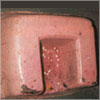
Chulli
Used by Baba for preparing food (Prasad) and later distributing to gathering of devotees (Annadan).
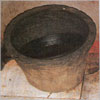
Kolamba
A stone pot which Baba used to place collected (Bhiksha). The food placed at an open place near Masjid was eaten by insects, birds and animals like dogs, cats, pigs. The remainder used to be eaten by Baba.
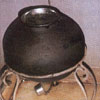
Water-Pot
Used for storing water to be drunk by all the thirsty (Pan-Pot)
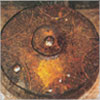
Jata
Jata (Hand mill) a pair of stone crushers used for grinding wheat implying that the seed of Karma when crushed and transformed into floor destroys the consequences of all good and evil deeds and liberates soul from binding of Karma.
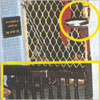
Udi Stand and Kathada (Railing)
At Masjid where Baba used to place his hands and attended visitor artists and give them Prasad (fruits or coins and handful of udi- as the most precious, pure and powerful substance in the universe from all sorts of contamination by evil or malignancy).
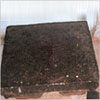
Baba’s Bathing Stone
On this stone Baba used to take bath which was executed by devotees.
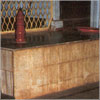
Udi Stone and Ota (Platform)
For burning essence sticks or udi (Loban) sticks whose fragrance was pleasant For creating a purified scented atmosphere. Baba used to sit on the platform on which udi stand was fixed.
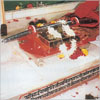
Satka (Stick)
The thick stick used by Baba to drive away evil for protecting his devotees facing calamities.
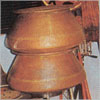
Two Copper Pots
Used by Baba to cook Khichadi or sweet Pulav as his Prasad (Annadan)







0 Comments